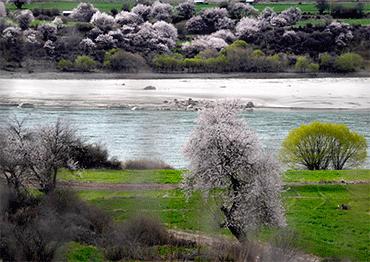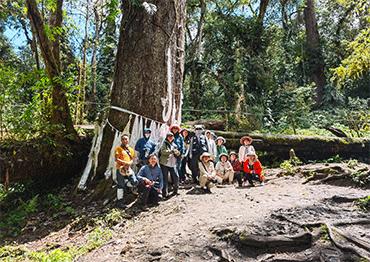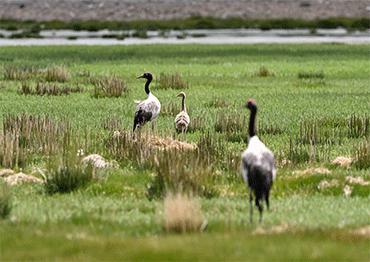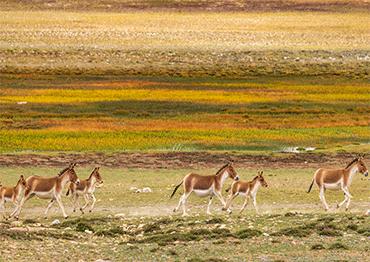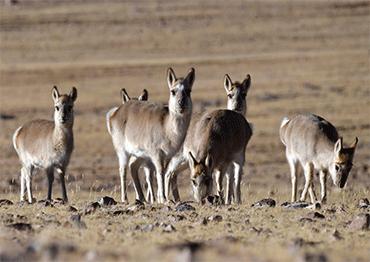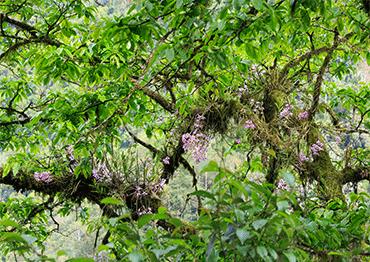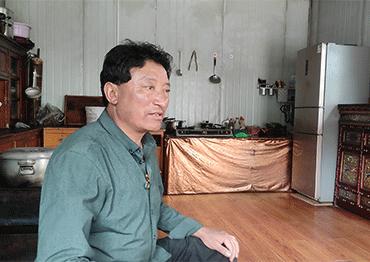In Xizang, five areas have been earmarked for national parks, and the process is ongoing. These include Changtang Reserve, Mount Qomolangma (also known as Mount Everest), the Gangdise Mountains, the Gaoligong Mountains and the Yarlung Zangbo Grand Canyon.
At the end of 2023, Xizang was home to 1,072 species of terrestrial wild vertebrates, including 65 species of wild animals under national first-class protection such as the snow leopard, wild yak, black-necked crane and Tibetan antelope, and 152 species of wild animals under national second-class protection.
Populations of large and medium wild animals in Xizang ranks among the nation’s highest. Tibetan antelopes, once endangered by poachers, have rebounded significantly, surpassing 300,000. Tibetan red deer, once deemed extinct, have also recovered, with their numbers exceeding 800.
Locals readily join wildlife conservation, partly due to religious and Buddhist traditions of “no killing” that have been reinforced since poaching was outlawed and use of animal skins discouraged.
Yang Le, deputy director of the Xizang Plateau Institute of Biology and a 20-year expert on black-necked cranes, stresses the value of community-led conservation. He told NewsChina that thanks to ongoing efforts, the population of overwintering black-necked cranes (national first-class protected) in Xizang has stayed steady, now exceeding 11,000. Rangers in crane habitats monitor the birds, which aids research. In February 2025, the black-necked crane was officially named Lhasa’s city bird.
The central government attaches great importance to ecological conservation on the Qinghai-Xizang Plateau, launching the Second Tibetan Plateau Scientific Expedition and Research in 2017. Following the first Qinghai-Xizang Scientific Expedition in the 1970s, it sought to update understanding on how the plateau’s environment, ecology and geology have changed amid global climate change and human activities.
Led by the Chinese Academy of Sciences (CAS), this large-scale project involves over 200 institutions and thousands of Chinese scientists across fields like geology, climatology, ecology, hydrology and social sciences, and has achieved significant results. According to an August 2024 press release, while the plateau faces ongoing challenges such as climate change and human activities, it has also seen positive shifts due to strengthened conservation efforts, including improved vegetation coverage, enhanced water and soil conservation, and better windbreak and sand fixation.
These efforts are backed by environmental blueprints and laws that are specific to the plateau area.
The Chengdu-based Institute of Mountain Hazards and Environment (IMHE) under CAS, which has monitored the plateau for more than two decades, said it remains one of the world’s regions with the highest ecological quality.
IMHE’s Wang Xiaodan told China News Service in August 2024 that Xizang’s remarkable progress in ecological protection stems mainly from the combined positive effects of a warming and wetting climate, ecological projects and the synergy of sound policies, human efforts and favorable natural conditions. Meanwhile, Xizang’s ecosystem services have remained stable while growing steadily. Key functions, including carbon sequestration, water conservation, soil retention and windbreak and sand fixation, have either stayed stable or risen by 2 to 5 percent. Wildlife populations have revived significantly.
In terms of forests, Xizang has a 12.31 percent coverage rate and a forest stock volume of 2.28 billion cubic meters, with both forest area and stock volume showing growth. For wetlands, 66 percent of natural wetlands are protected. Desertified areas have decreased by 35,000 hectares compared to 2010.
Major afforestation projects in the mountains north and south of Lhasa and along the middle reaches of the Yarlung Zangbo River have turned once barren lands lush and green. Launched in 2021, the projects aim to expand green coverage in and around Lhasa by afforesting over 137,333 hectares of barren mountains by 2030, covering 35 townships across nine counties or districts in Lhasa and Lhokha, in the region’s southeast.
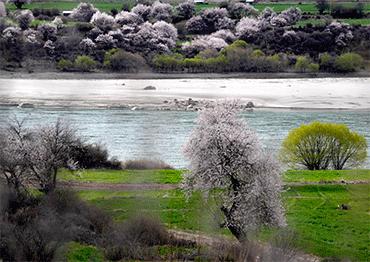
 Old Version
Old Version
